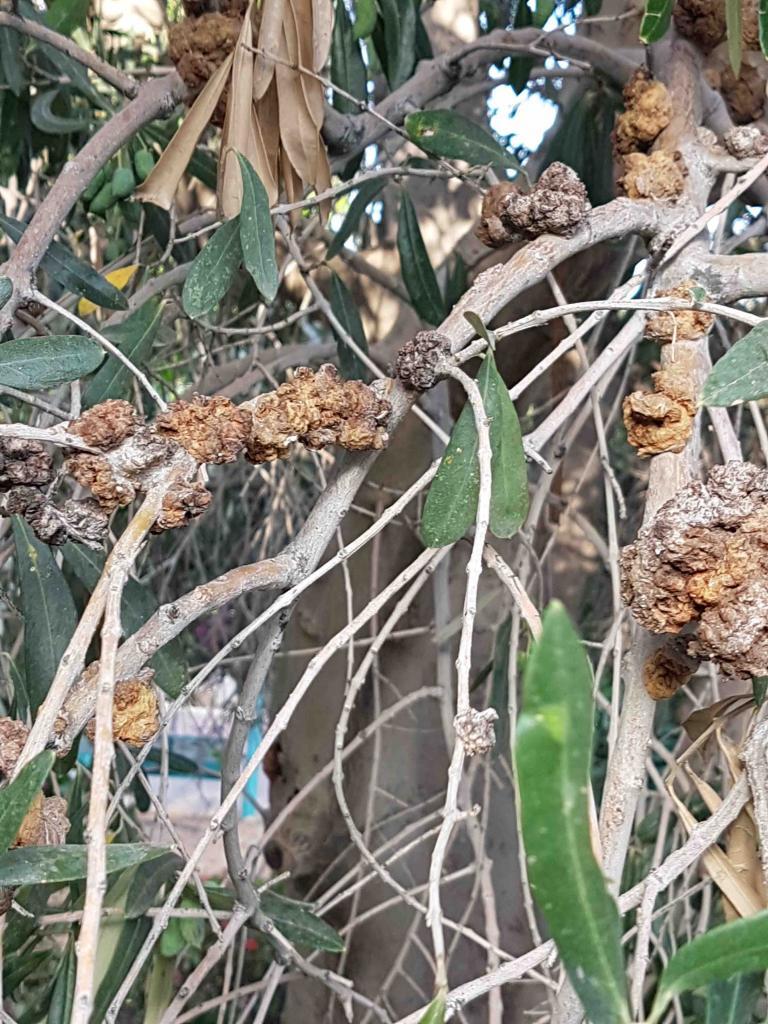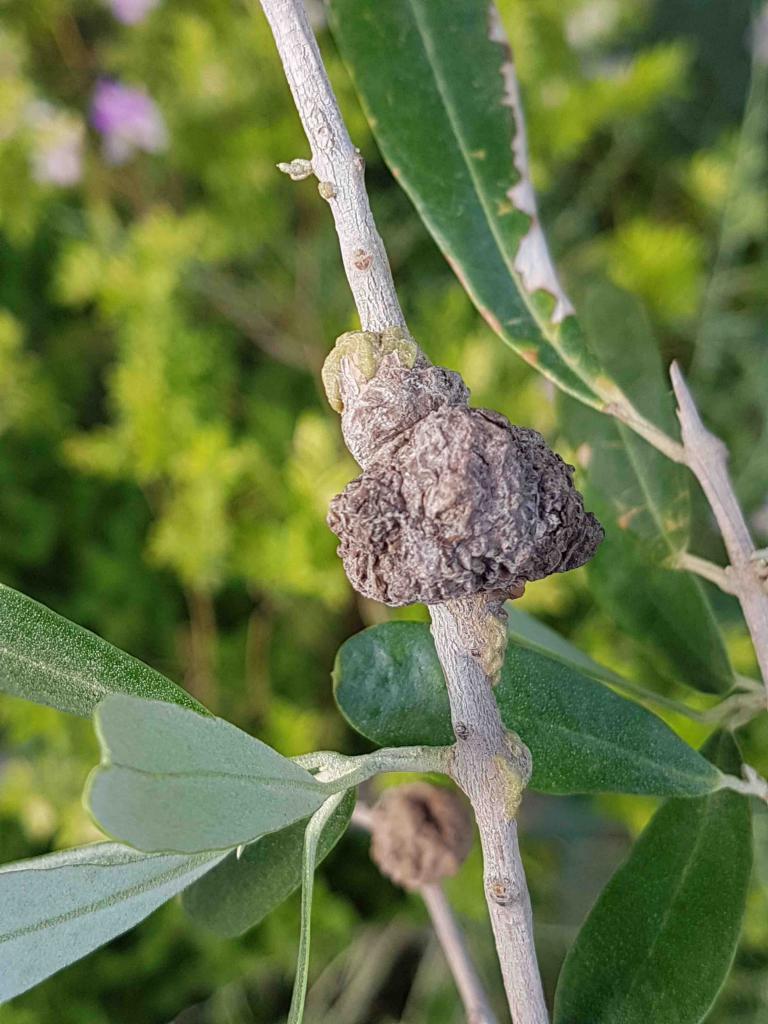Olive Bacterial Canker
Olive
A disease caused by the bacteria Pseudomonas syringae and is characterized by the formation of rough woody-like galls on branches and trunks that are approximately 1 inch thick. Defoliation and reduced yield in mature trees occurs, and young infect trees might die. The bacteria penetrates through cracks and openings in the plant’s tissues provided by freezing injuries (or pruning) and is easily spread by water splashes. The infections will likely occur during wintertime, while the development of knots will take place later on such as spring or summer. All varieties are susceptible.
Sanitation: Remove knots using sterile pruning tools. Reducing the presence of knots helps to diminish the overall spread of the bacteria.
Oleander plants can act as a reservoir; therefore, removing oleander plants growing next to olive trees can prevent the initial infection.
Control requires preventive application treatments with copper oxychloride or copper hydroxide in order to reduce the bacteria population found on the plant surface.
*Names marked in red are considered to be highly poisonous to beneficial insects.
*Names marked in green are considered to be organic and IPM (integrated pest management) compatible.
Image Gallery


